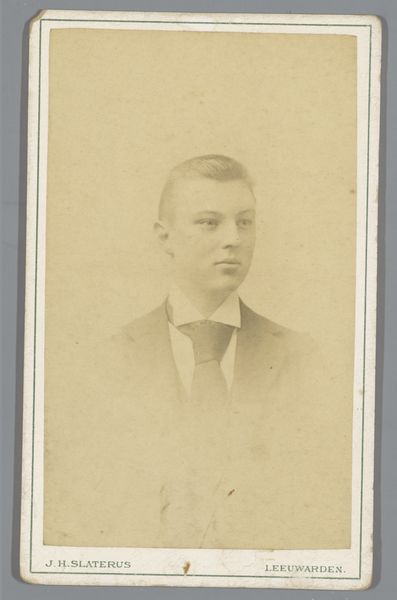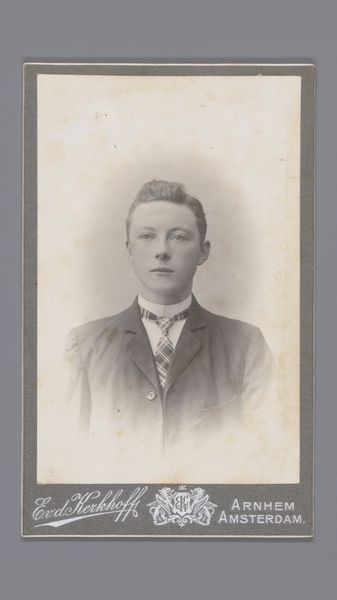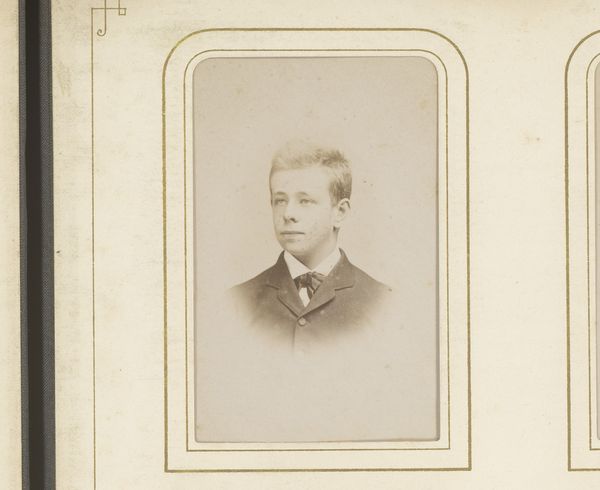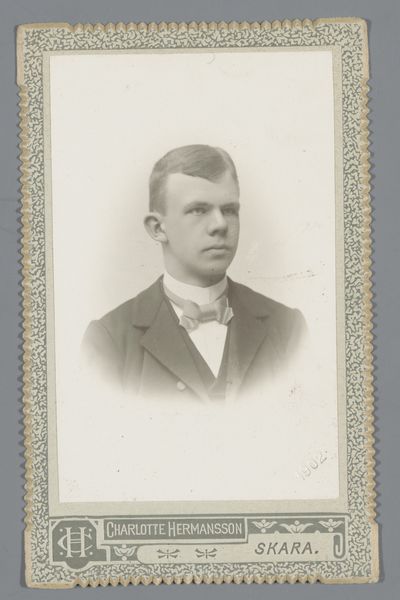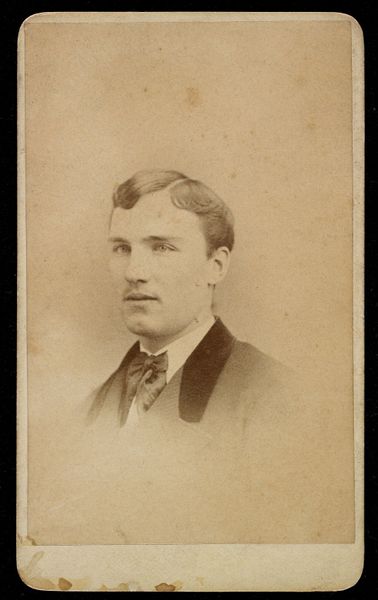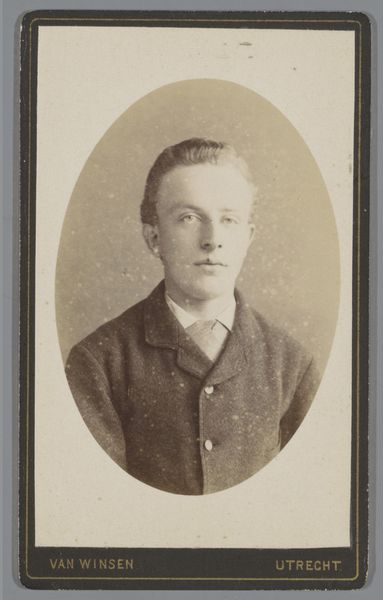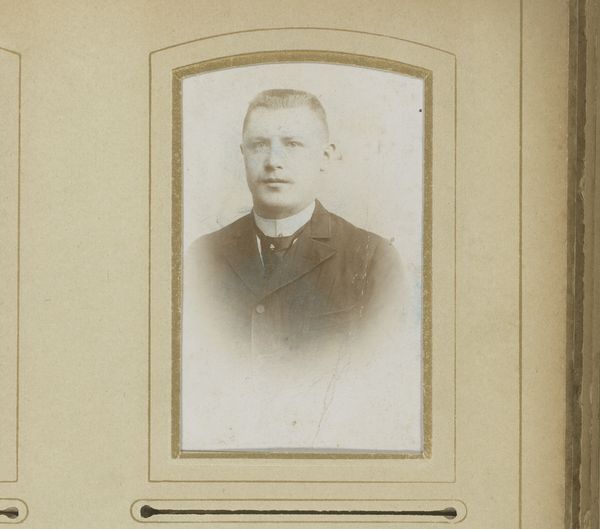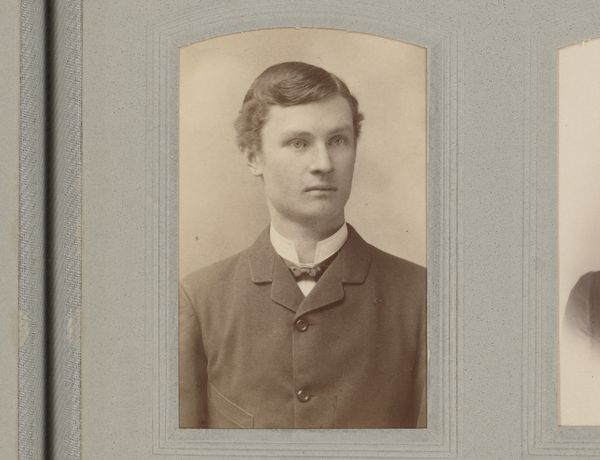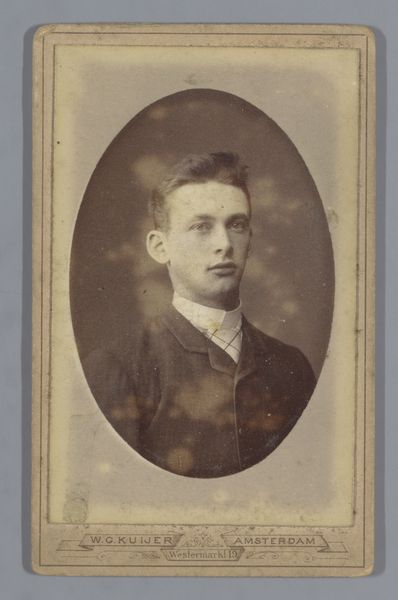
Dimensions: height 102 mm, width 63 mm
Copyright: Rijks Museum: Open Domain
This photograph of an unknown man was taken by Willem Gerhardus Kuijer in Amsterdam, likely in the late 19th century. Small photographs like this were very popular at the time as affordable keepsakes, often collected in albums or exchanged amongst friends and family. Looking at the image, one can't help but wonder about the social context that made such a portrait possible. The rise of photography in the 19th century democratized portraiture, making it accessible to a wider segment of society than ever before. While painted portraits were once reserved for the wealthy elite, photographic portraits allowed people from various social classes to document their likeness and preserve their image for posterity. The institutional history of photography is also relevant here. Kuijer operated his studio from Westermarkt 11 in Amsterdam, becoming part of a network of commercial photographers who catered to the growing demand for portraiture. These studios played a crucial role in shaping visual culture. By researching archives, newspapers, and studio records, we can better understand the social and cultural significance of these seemingly simple images.
Comments
No comments
Be the first to comment and join the conversation on the ultimate creative platform.
